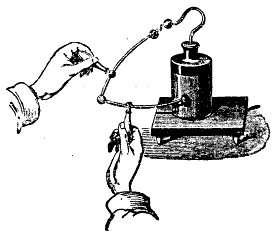Medicine:Leiden accumulator
The Leiden accumulator, created in 1745 was the first device that produced electric shock for medical purposes.
Electricity was known to the Greeks, but it was after the Charterhouse schoolteacher Stephen Gray electrified a boy, probably one of his pupils, in 1730 that experimentation with electricity became popular all over Europe, eventually producing the accumulator.
In France , several experiments were made on soldiers, and a community of monks, all holding onto a chain, and given an electric shock which made them fall "like a set of dominoes". Electric shock therapy was supposed to cure paralysis, gout, haemorrhoids, epilepsy.
Contemporary uses
The founder of Methodism, John Wesley, was a great believer of the treatment, which became so popular, that he eventually opened three clinics dedicated to it. By the second third of the century, orthodox medical profession was using it, the Middlesex Hospital purchased an accumulator in 1767.
Legacy
The method was an early forerunner of electroconvulsive therapy.
See also
References
- Picard, Liza (2002). Dr. Johnson's London: Coffee-Houses and Climbing Boys, Medicine, Toothpaste and Gin, Poverty and Press-Gangs, Freakshows and Female Education. London: St. Martins Press. pp. 170. ISBN 978-0-312-27665-2. https://books.google.com/books?q=%22Leiden+accumulator%22&as_brr=0&spell=1&oi=spell.
sv:Leidenflaska


